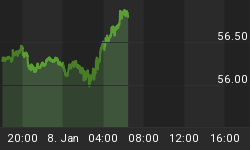"What's good for oil is bad for the stock market." So goes the old Wall Street bromide. This admonition seems to have been forgotten by traders as the attempt at pushing the broad market indices higher in recent days suggests.
But for how much longer can the stock market withstand the pressure from the currently high price of fuel? By the looks of the dominant trend channels in the major indices, probably not much longer. The sharp rally in crude oil may have been ignored by most investors as euphoria and greed are the dominant emotions right now. But as experienced traders well know, these are emotions that typically precede market peaks.
As suggested, the S&P 500 index (SPX) is starting to feel the heat from the recent spike in oil prices. This can be seen in the daily chart shown below as the SPX is once again testing the upper boundary of the immediate-term uptrend channel that began off the April lows. Crossing above the channel's upper boundary qualified as a "channel buster" and usually denotes exhaustion of the prevailing trend. The internal indicators strongly suggest the S&P is becoming exhausted as it tries to fight the force of the rising oil price and the falling dominant interim cycle.

The Dow Jones Transportation Average (DJTA) is also showing signs of strain as the "old generals" have been beaten up in recent months. The old saying, "What's bad for GM is bad for the economy" still holds true. The message of the heretofore lagging DJTA is a heads-up warning of potential trouble in the economy later this year as we head closer to the peaking of the 6-year cycle; stubbornly high oil and gas prices aren't helping either.

In the previous installment to this article a few weeks ago I asked, "How high could oil rally before finally peaking again?" My answer was that "a $60/barrel oil or slightly higher would not be surprising. This would be a perfect coincident to the next dominant interim cycle bottom in July."
As stated previously, Wall Street has been conveniently ignoring the rising oil price of late but that ignorance cannot continue much longer. As we head closer to the end of the month it wouldn't be surprising to see the recent upside momentum in the broad market reverse sharply and give way to a developing downside momentum of stock prices as investors finally respond to the resurgent oil price among other things.
















